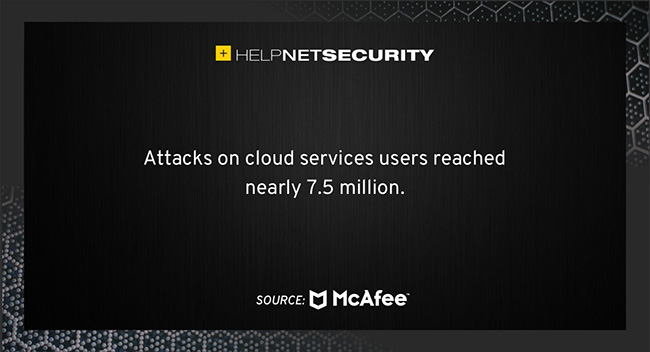In Q2 2020, there was an average of 419 new threats per minute
McAfee released a report examining cybercriminal activity related to malware and the evolution of cyber threats in Q2 2020. During this period, there was an average of 419 new threats per minute as overall new malware samples grew by 11.5%.

A significant proliferation in malicious Donoff Microsoft Office documents attacks propelled new PowerShell malware up 117%, and the global impact of COVID-19 prompted cybercriminals to adjust their cybercrime campaigns to lure victims with pandemic themes and exploit the realities of a workforce working from home.
“The second quarter of 2020 saw continued developments in innovative threat categories such as PowerShell malware and the quick adaptation by cybercriminals to target organizations through employees working from remote environments,” said Raj Samani, McAfee fellow and chief scientist.
“What began as a trickle of phishing campaigns and the occasional malicious app quickly turned into a deluge of malicious URLs, attacks on cloud users and capable threat actors leveraging the world’s thirst for more information on COVID-19 as an entry mechanism into systems across the globe.”
COVID-19-themed threat campaigns
After a first quarter that saw the world plunge into pandemic, the second quarter saw enterprises continue to adapt to unprecedented numbers of employees working from home and the cybersecurity challenges this new normal demands.
Over the course of Q2, a 605% increase in COVID-19-related attack detections were observed, compared to Q1.
Donoff and PowerShell malware
Donoff Microsoft Office documents act as TrojanDownloaders by leveraging the Windows Command shell to launch PowerShell and proceed to download and execute malicious files. Donoff played a critical role in driving the 689% surge in PowerShell malware in Q1 2020.
In Q2, the acceleration of Donoff-related malware growth slowed but remained robust, driving up PowerShell malware by 117% and helping to drive a 103% increase in overall new Microsoft Office malware. This activity should be viewed within the context of the overall continued growth trend in PowerShell threats. In 2019, total samples of PowerShell malware grew 1,902%.

Attacks on cloud users
Nearly 7.5 million external attacks on cloud user accounts were observed.
This data set represents companies in all major industries across the globe, including financial services, healthcare, public sector, education, retail, technology, manufacturing, energy, utilities, legal, real estate, transportation, and business services.
Q2 2020 threat activity
- Malware overall. 419 new threats per minute were observed in Q2 2020, an increase of almost 12% over the previous quarter. Ransomware growth remained steady compare to the first quarter of 2020.
- Coinminer malware. After growing 26% in Q1, new coinmining malware increased 25% over the previous quarter sustained by the popularity of new coinmining applications.
- Mobile malware. After a 71% increase in new mobile malware samples in Q1, Q2 saw the category slow 15% despite a surge in Android Mobby Adware.
- Internet of Things. New IoT malware increased only 7% in Q2, but the space saw significant activity by Gafgyt and Mirai threats, both of which drove growth in new Linux malware by 22% during the period.
- Regional cyber activity. McAfee counted 561 publicly disclosed security incidents in the second quarter of 2020, an increase of 22% from Q1. Disclosed incidents targeting North America decreased 30% over the previous quarter. These incidents decreased 47% in the United States, but increased 25% in Canada and 29% in the United Kingdom.
- Attack vector. Overall, malware led among reported attack vectors accounting for 35% of publicly reported incidents in Q2. Account hijacking and targeted attacks accounted for 17% and 9% respectively.
- Sector activity. Disclosed incidents detected in the second quarter of 2020 targeting science and technology increased 91% over the previous quarter. Incidents in manufacturing increased 10%, but public sector events decreased by 14%.